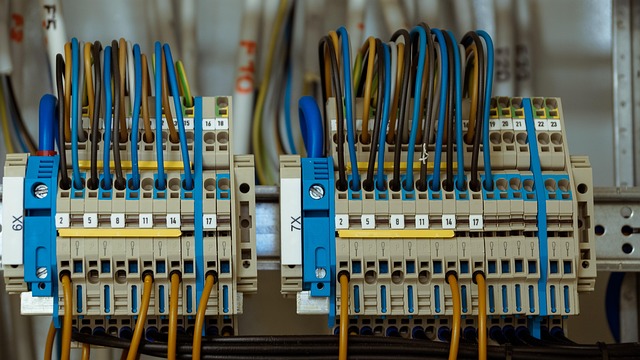Electricians must differentiate between old fuses and modern circuit breakers for optimal protection. Traditional fuses, found in older homes, have delays and specialized replacements while contemporary circuit breakers, equipped with thermal or magnetic sensors, swiftly detect abnormal currents to prevent fires or damage. Replacing old fuses with compatible modern circuit breakers involves careful inspection, safe removal, installation, and testing for enhanced system safety and efficiency.
Looking to upgrade your home’s electrical safety? It’s time to replace old fuses with modern circuit breakers. This simple switch, often handled by a qualified electrician, offers enhanced protection against overloads and short circuits. In this article, we’ll guide you through the process and highlight key differences between outdated fuses and cutting-edge circuit breakers, ensuring your home stays safe and secure. Discover why an electrician‘s expertise is invaluable in this essential home improvement task.
- Understanding Old Fuses and Modern Circuit Breakers
- The Process of Replacing Fuses with Circuit Breakers by an Electrician
Understanding Old Fuses and Modern Circuit Breakers

Understanding the difference between old fuses and modern circuit breakers is key for any electrician. Old-style fuses, often found in older homes, were designed to protect electrical circuits by blowing when they detected excessive current. However, they have limitations; they don’t always trip instantly, and replacing them requires specialized knowledge.
In contrast, modern circuit breakers are a significant upgrade. These devices use thermal or magnetic sensors to detect abnormal current levels and automatically interrupt the flow, preventing potential fires or damage. They’re easier to reset and offer better protection for today’s more demanding electrical systems, making them a standard choice for many electricians.
The Process of Replacing Fuses with Circuit Breakers by an Electrician

When an electrician needs to replace old fuses with modern circuit breakers, they first identify the location and type of fuses in the electrical system. This involves carefully inspecting the wiring and understanding the circuit’s functionality. Once identified, the electrician safely disconnects the old fuses, often requiring specialized tools to remove them without damaging surrounding components.
The next step is to install the new circuit breakers, which involve precise placement and secure connections. Electricians ensure these breakers are compatible with the system and rated for the correct current and voltage. After installation, they test the circuit breakers to verify their functionality, ensuring the electrical system is now safer and more efficient than with traditional fuses.
When it comes to electrical safety and convenience, upgrading from old fuses to modern circuit breakers is a smart choice. A qualified electrician can efficiently navigate this process, ensuring your home’s electrical system is protected against overloads and short circuits. This simple upgrade offers peace of mind and enhances the overall reliability of your electrical infrastructure. Trusting an expert electrician for this task guarantees a seamless transition, making your home safer and more efficient in today’s world.
